Related Research Articles
Feminist film theory is a theoretical film criticism derived from feminist politics and feminist theory influenced by second-wave feminism and brought about around the 1970s in the United States. With the advancements in film throughout the years feminist film theory has developed and changed to analyse the current ways of film and also go back to analyse films past. Feminists have many approaches to cinema analysis, regarding the film elements analyzed and their theoretical underpinnings.

Elsie Jane Wilson was a cinema actress, director, and writer during the early film era. She took part in the productions of the silent film era and starred in over thirty films. Between the years of 1916 and 1919, Wilson was credited for producing, writing two films, and directing eleven films. She was best known in the genres of dramas and comedy dramas.

Alice Ida Antoinette Guy-Blaché was a French pioneer film director. She was one of the first filmmakers to make a narrative fiction film, as well as the first woman to direct a film. From 1896 to 1906, she was probably the only female filmmaker in the world. She experimented with Gaumont's Chronophone sync-sound system, and with color-tinting, interracial casting, and special effects.
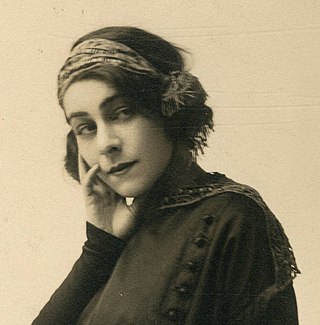
Alla Nazimova was a Russian-American actress, director, producer and screenwriter.

Nell Shipman was a Canadian actress, author, screenwriter, producer, director, animal rights activist and animal trainer. Her works often had autobiographical elements to them and reflected her passion for nature. She is best known for making a series of melodramatic adventure films based on the novels by American writer James Oliver Curwood in which she played the robust heroine known as the ‘girl from God’s country.'

Elvira Notari was an Italian film director, one of the country's early and more prolific female filmmaker. She is credited as the first woman who made over 60 feature films and about 100 shorts and documentaries, quite often writing the subjects and screenplays, inspired by Naples. The Elvira Notari Prize is named after her.

Matrimony's Speed Limit is a 1913 silent short film produced and directed by pioneering female film maker Alice Guy-Blaché. It was produced by Solax Studios when it and many other early film studios in America's first motion picture industry were based in Fort Lee, New Jersey, at the beginning of the 20th century. It is one of only about 150 films surviving out of the more than one thousand produced and/or directed by Guy-Blaché.
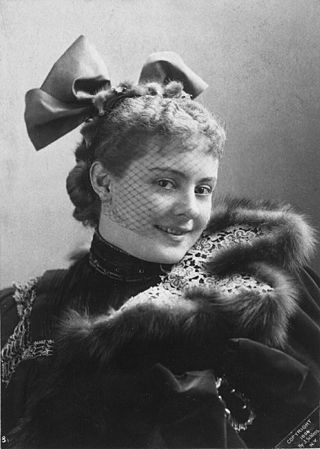
Cissy Fitzgerald was an English-American vaudeville actress, dancer, and singer who appeared in numerous silent and sound films. Fitzgerald acted in a popular Gaiety Girl show beginning in 1894 and was filmed in the role in 1896 in a self-titled short film shot by Thomas Edison's film company. She did not appear in films again until 1914 where she signed with the Vitagraph company and was quite popular in feature films and her own series of Cissy short films. Very little of Fitzgerald's silent material survives except her comic backup role in the 1928 Lon Chaney vehicle Laugh, Clown, Laugh.

Paulette de Vere McDonagh, was an Australian film director, who often worked in collaboration with her sisters Phyllis McDonagh and Isabel McDonagh. In 1933 it was claimed she was one of only five female film directors in the world.

Esther Eng was an American film director and the first female director to direct Chinese-language films in the United States. Eng made four feature films in America, and five in Hong Kong. She was recognized as a female pioneer who crossed the boundaries of race, language, culture and gender.
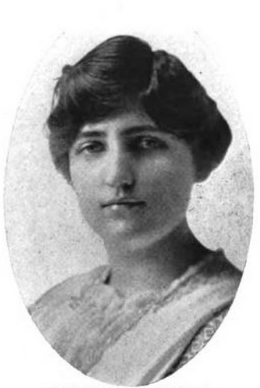
Marguerite Bertsch was an American screenwriter and film director who worked in the early days of film. Her 1917 text How to Write for Moving Pictures: A Manual of Instruction and Information reflected and influenced the screenwriters of the era. In the early days of film it was not uncommon for "scenario writers" to be women and she was among those who, beginning in 1916, also directed films. However, she would later be called one of the "forgotten women" of silent film as the non-acting women of early film largely became obscure. Prints of two films that Bertsch had worked on as a screenwriter were rediscovered in the Netherlands, at the Nederlands Filmmuseum. These newly discovered films, The Diver and The Troublesome Step-Daughter, and the 1914 film A Florida Enchantment, are currently the only films from Bertsch's career that have been recovered. The rest are presumed to be lost.
African American cinema evolved at just about the same pace as white cinema, and although the role of Black women in early silent film has only recently begun to receive popular and academic attention, Black women were involved in Black cinema from the very start of U.S. film history. In their own day, Maria P. Williams was called the first Black woman filmmaker for her work on The Flames of Wrath (1923) and Tressie Souders was also honored with the same distinction for her work in A Woman’s Error (1922). Others have argued that that distinction belongs to Madame E. Toussaint Welcome's war documentary Doing Their Bit (1916) or Eloyce King Patrick Gist for Hell Bound Train. What's certain is that Black women were contributing as screenwriters, actors, directors and producers from the earliest days of film.
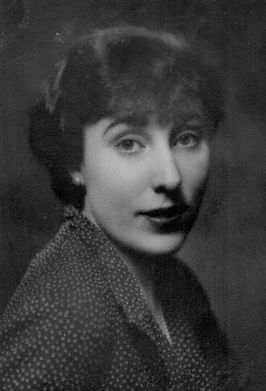
Mary Manning Howe Adams was an Irish novelist, playwright and film critic.
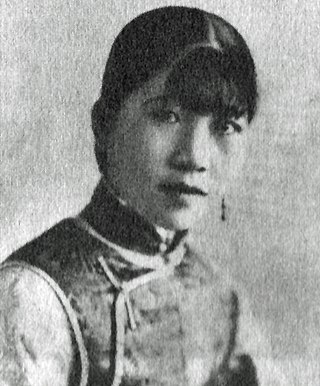
Xie Caizhen was a Chinese actress, writer and film director recognised to be the first woman in China to direct a film. Other than her appearance in three films and her one directorial role, little is known about her life prior to or following her film career. The film she directed and which she also wrote and appeared in was named An Orphan's Cry (孤雏悲声) (1925).
May Gowen Watkis served as a projectionist, clerk, and tax inspector at various agencies of the British Columbia government during the years 1913-40. In 1920-21, she was briefly employed as a clerk in the Vancouver office of the British Columbia Patriotic and Educational Picture Service (PEPS), under the service's director, Dr. Albert Richard Baker. In May 1921, she was the subject of an article written by Edith Cuppage for Maclean's Magazine. Cuppage described Watkis as the head or "directress" of the Picture Service. This erroneous information about May Watkis has been repeated in a number of books and articles on Canadian film history, which describe her as the director of the Patriotic and Educational Picture Service and the producer of its films.
How Men Propose is a 1913 American silent short comedy film, usually credited to Lois Weber and Phillips Smalley as directors and to Weber as writer and producer, although their definite authorship cannot be confirmed. The film has recently not been included in Weber's filmography by scholars, and the Library of Congress, while listing it as one of Weber's films notes that "the director is unknown, but may be Lois Weber." It was produced by the Crystal Film Company and distributed by the Universal Film Manufacturing Company.
The British Columbia Patriotic and Educational Picture Service was a British Columbia provincial government department founded in April 1920 by the Liberal government of Premier John Oliver. It was created under legislation entitled "The Moving Pictures Act Amendment Act" of 1920, as proposed by Oliver's Attorney-General, J. W. de B. Farris. The intended role of the picture service was to produce, acquire, distribute, and exhibit motion pictures promoting British Columbia and Canada, and by so doing counter the nationalistic American content in Hollywood films. The legislation required that all BC theatres exhibit up to 15 minutes of the service's films as part of each screening. Resistance to this requirement, coupled with the insertion of political propaganda into its films, made the picture service highly controversial, and it ceased production in 1922–23.
Leotta Whytock was an American film editor and actress active during the early days of Hollywood. She was married to fellow film editor Grant Whytock.

Women's suffrage, the legal right of women to vote, has been depicted in film in a variety of ways since the invention of narrative film in the late nineteenth century. Some early films satirized and mocked suffragists and Suffragettes as "unwomanly" "man-haters," or sensationalized documentary footage. Suffragists countered these depictions by releasing narrative films and newsreels that argued for their cause. After women won the vote in countries with a national cinema, women's suffrage became a historical event depicted in both fiction and nonfiction films.
The Girl Spy films are an American silent film series produced by Kalem and shot in Jacksonville, Florida. The films in the series were directed by Sidney Olcott and all starred American filmmaker and actress Gene Gauntier who was also the screenwriter for the series. The films are The Girl Spy: An Incident of the Civil War (1909); The Further Adventures of the Girl Spy (1910); The Bravest Girl in the South (1910); The Love Romance of the Girl Spy (1910); The Girl Spy Before Vicksburg (1910); and To the Aid of Stonewall Jackson: An Exploit of the Girl Spy (1911).
References
- ↑ "Digital Humanities Cinema Projects". Transformations Conference. 16 March 2016. Retrieved 21 April 2022.
The Women Film Pioneers Project (WFPP) is a freely accessible, collaborative online database that showcases the hundreds of women who worked behind-the-scenes in the silent film industry as directors, producers, editors, and more. Women Film Pioneers is published by Columbia University Libraries' Center for Digital Research and Scholarship.
- ↑ Golomb, Liorah. "Film and Media Studies: Websites". LibGuides. University of Oklahoma . Retrieved 21 April 2022.
- ↑ Frost, Kelly. "Film & Media Research Guide: Start Here". Research Guides. Kalamazoo College . Retrieved 21 April 2022.
- ↑ "Jane Gaines". American Film Showcase . Retrieved 21 April 2022.
© Copyright 2022 USC School of Cinematic Arts (This is a program of the U.S. Department of State with funding provided by the U.S. Government, administered by USC).
- ↑ Jesson, Claire (1 December 2019). "Jane M. Gaines, Pink-Slipped: What Happened to Women in the Silent Film Industries? Kristen Anderson Wagner, Comic Venus: Women and Comedy in American Silent Film. Maggie Hennefeld, Specters of Slapstick and Silent Film Comediennes". Screen. 60 (4): 624–628. doi:10.1093/screen/hjz044.
It has been over twenty-five years since the Women Film Pioneers Project was founded by Jane M. Gaines, whose latest book, Pink-Slipped: What Happened to Women in the Silent Film Industries?, sets out to push the 'reset' button on feminist film historiography.
- ↑ "Jane Gaines". Center for Comparative Media. Columbia University . Retrieved 21 April 2022.
- ↑ Renée, V (20 October 2013). "New Resource Gives an Exhaustive History of Female Filmmakers During the Birth of Film". No Film School. Retrieved 21 April 2022.
- ↑ "5 Highlights from Women Film Pioneers Project: African-American Women in Silent Film, Women Camera Operators and More". IndieWire. 15 October 2013. Retrieved 21 April 2022.
- ↑ Coster, Ramzi De (10 October 2013). "A New Online Compendium Provides Evidence of the Many Women Who Worked in Film in Its Silent Era". IndieWire . Retrieved 21 April 2022.
- ↑ Ismail, Nadia (29 October 2013). "Women Film Pioneers Project: Ready for More Than a Close-Up | Filmmaker Magazine". Filmmaker Magazine . Retrieved 21 April 2022.
- ↑ "Lost Visionaries of the Silent Screen: Highlights from the Women Film Pioneers Project". UChicago Arts. University of Chicago . Retrieved 21 April 2022.
- ↑ "Editorial Team and Acknowledgments". Women Film Pioneers Project. Columbia University Libraries. Retrieved 21 April 2022.
- ↑ "About the Project". Women Film Pioneers Project. Columbia University Libraries. Retrieved 21 April 2022.
- ↑ "Women Film Pioneers Project". Women's Film and Television History Network - UK/Ireland. 16 September 2014. Retrieved 21 April 2022.
See the list of women pioneers that need a researcher. WFTHN focuses on British and Irish women working in the UK/Ireland or abroad and on overseas women working here. It is affiliated to Women & Film History International and encourages British and Irish contributions to international initiatives such as the Women Film Pioneers Database, the biennial international Women and Silent Screen conferences and the women's television conference, Consoling Passions. WFTHN is not based in a single institution but collaborates with a range of professional and academic organizations, archival collections and websites relevant to women's filmmaking and television production such as the Women and Silent British Cinema (WSBC) website, Screenonline, the British Film Institute, The Women's Library, WiFT (UK) and so on.
- ↑ Cutler, Aaron. "Reviewed - Early Women Filmmakers: An International Anthology". Cineaste Magazine .
A six-disc Blu-ray/DVD dual format edition. Total running time of 652 min. A Flicker Alley release.
- ↑ Hawkins, Chelsea. "11 Female Film Pioneers Who Paved the Road to Hollywood". Mic (media company) . 2014-03-07. Retrieved 21 April 2022.
- ↑ F, Frank (22 July 2021). "Groundbreaking Female Filmmakers Of Early Hollywood". Grunge.com. Retrieved 21 April 2022.
- ↑ Rambova (2014-09-20). "Nazimova in Columbia University's Women Film Pioneers Project". Alla Nazimova Society. Retrieved 21 April 2022.
- ↑ Horne, Jennifer (2013). "Alla Nazimova". Women Film Pioneers Project. doi:10.7916/d8-ws0b-qz98 . Retrieved 21 April 2022.
- 1 2 "How to Use This Resource". Women Film Pioneers Project. Columbia University Libraries. Retrieved 21 April 2022.
- ↑ "Pioneer Profiles". Women Film Pioneers Project. Columbia University Libraries. Retrieved 21 April 2022.
- ↑ "Overview Essays". Women Film Pioneers Project. Columbia University Libraries. Retrieved 21 April 2022.
- ↑ Saccone, Kate (11 March 2016). "Reclaiming Early Film History: The Women Film Pioneers Project". agnès films. Retrieved 21 April 2022.
- ↑ "Kate Saccone, Author". Bright Wall/Dark Room. Retrieved 21 April 2022.
Kate Saccone is a freelance writer based in NYC. For her day job, she's the Project Manager of the Women Film Pioneers Project at Columbia University.
- ↑ "Lost Visionaries of the Silent Screen: Highlights from the Women Film Pioneers Project". UChicago Arts. University of Chicago. November 11, 2016. Retrieved 21 April 2022.
Kate Saccone is the Project Manager of the Women Film Pioneers Project (WFPP), edited by Jane Gaines (Columbia University). She holds a Master of Arts in Film Studies from Columbia University (2013) and a Bachelor of Arts in Screen Studies from Clark University (2011). In New York City, she has helped organize screenings devoted to the work of early female filmmakers at places like the Museum of Modern Art, Anthology Film Archives, and Columbia University.
- ↑ "September – 2016". Women Film Pioneers Project. Retrieved 21 April 2022.
- ↑ Saccone, Kate (25 August 2020). "Digital (Re)Visions: May Watkis and the Women Film Pioneers Project". Modernism/modernity. Retrieved 21 April 2022.
- ↑ Bastin, Sarah. "Reclaiming Film History: An Interview with Women Film Pioneers Project Manager Kate Saccone". Flicker Alley. Archived from the original on 11 March 2018. Retrieved 21 April 2022.
- ↑ "Contributors". Women Film Pioneers Project. Columbia University Libraries. Retrieved 21 April 2022.
- ↑ "Sofia Bull". Film. University of Southampton . Retrieved 21 April 2022.
- ↑ Bull, Sofia (2014). "Alva Lundin". Women Film Pioneers Project. doi:10.7916/d8-326g-2n79 . Retrieved 21 April 2022.
- ↑ Pearlman, Karen; Heftberger, Adelheid (10 August 2018). "Recognising Women's Work as Creative Work". Apparatus. Film, Media and Digital Cultures of Central and Eastern Europe (6). doi:10.17892/app.2018.0006.124 . Retrieved 21 April 2022.
- ↑ Gaines, Jane; Vatsal, Radha. "How Women Worked in the US Silent Film Industry". Women Film Pioneers Project. Retrieved 21 April 2022.
- ↑ "Margaret Hennefeld". College of Liberal Arts. University of Minnesota . Retrieved 21 April 2022.
- ↑ "Professor Kathy Fuller-Seeley publishes overview essay for Columbia University Women Film Pioneers Project". Radio, Television and Film. University of Texas at Austin . Retrieved 21 April 2022.
- ↑ Fuller-Seeley, Kathryn; Mahar, Karen Ward. "Exhibiting Women: Gender, Showmanship, and the Professionalization of Film Exhibition in the United States, 1900–1930". Women Film Pioneers Project. Columbia University Libraries. Retrieved 21 April 2022.
- ↑ "Shelley Stamp: Professor of Film + Digital Media". University of California, Santa Cruz . Retrieved 21 April 2022.
- ↑ Stamp, Shelley. "Lois Weber". Women Film Pioneers Project. Retrieved 21 April 2022.
- ↑ "Xin Peng's essay on Yan Shanshan now available on Women Film Pioneer Project". Cinema & Media Studies. University of Washington . Retrieved 21 April 2022.
- ↑ Talbot, Margaret (24 October 2019). "The Women Who Helped Build Hollywood". The New Yorker . Retrieved 21 April 2022.
- ↑ "'Silent Women: Pioneers of Cinema' Explores Film's Female Trailblazers". Women and Hollywood. November 16, 2016. Retrieved 21 April 2022.
Book excerpt from the introduction of "Silent Women: Pioneers of Cinema"
- ↑ "Silent women: pioneers of cinema". Bill Douglas Cinema Museum . Retrieved 21 April 2022.
Collection of chapters focusing on female writers, directors, producers, stars, editors and cinematographers from the silent era of film, edited by Melody Bridges and Cheryl Robson. Contents: Introduction / Melody Bridges and Cheryl Robson; 1. Girl from God's country: the history of women in film and other war stories / Karen Day; 2. Early African-American female filmmakers / Aimee Dixon Anthony; 3. The silent producer: women filmmakers who creatively controlled the silent era of cinema / Pieter Aquilia; 4. Women were writing: beyond melodrama and hot house romances / Patricia Di Risio; 5. Doing it all: women's on- and off-screen contributions to European silent film / Julie K. Allen; 6. Female legends of the silver screen / Melody Bridges; 7. Directors from the dawn of Hollywood / Francesca Stephens. Images 8. Interview with director Dorothy Arzner / Kevin Brownlow; 9. Women film editors from silent to sound / Tania Field; 10. Who was the first female cinematographer in the world? / Ellen Cheshire; 11. When the woman shoots: ladies behind the silent horror film camera / K. Charlie Oughton; 12. Critics, reformers and educators: film culture as a feminine sphere / Shelley Stamp; 13. U.S. women directors: the road ahead / Maria Giese.
- ↑ Brownlow, Kevin; Stamp, Shelley; Day, Karen; Giese, Maria; Aquilia, Pieter; di Risio, Patricia; Dixon, Bryony (2016). Bridges, Melody; Robson, Cheryl (eds.). Silent Women: Pioneers of Cinema. Twickenham: Supernova Books. ISBN 978-0-9566329-9-9.
- ↑ McLane, Betsy A. (2 December 2016). "Early on, a Woman's Place Was in the Cutting Room". CineMontage . Motion Picture Editors Guild . Retrieved 21 April 2022.